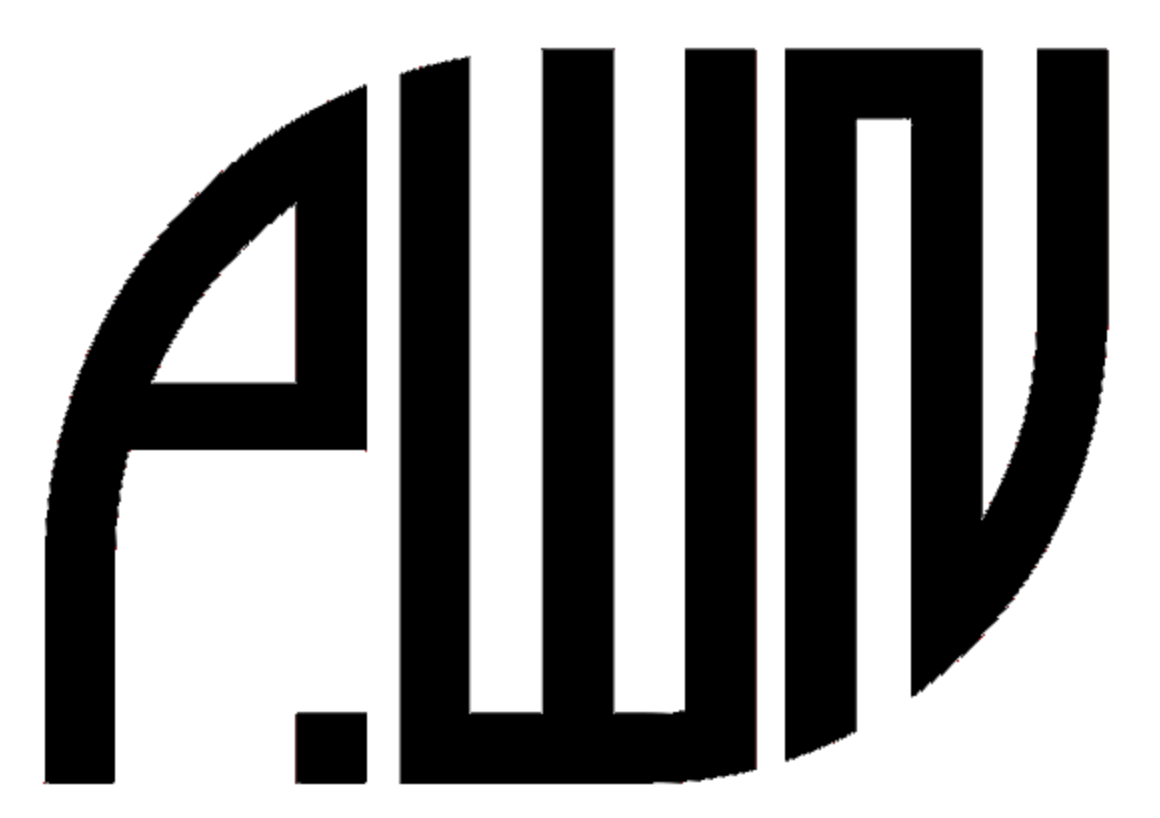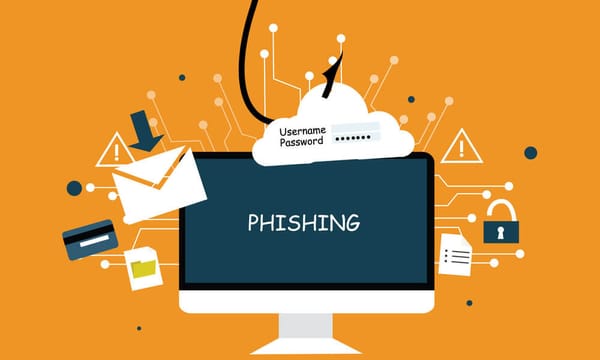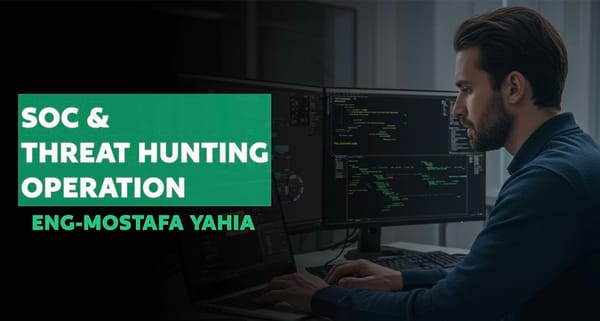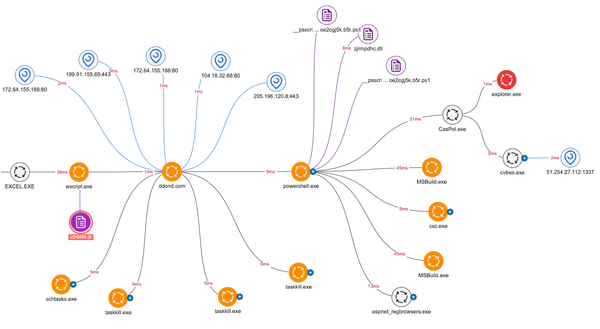Essential Wazuh Rules for Building an Effective SOC: Advanced Configuration for Real-Time Threat Detection
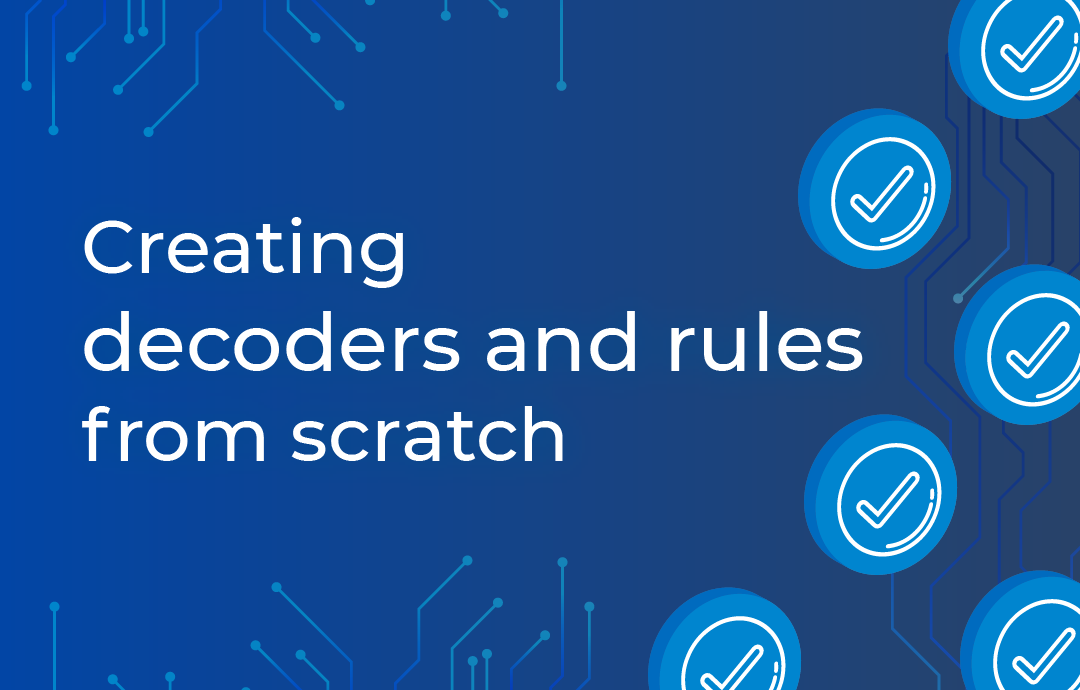
In today's rapidly evolving threat landscape, Security Operations Centers (SOCs) face unprecedented challenges in detecting and responding to sophisticated attacks. As adversaries employ increasingly advanced techniques to evade traditional security controls, SOC teams require powerful, flexible, and scalable security monitoring solutions. Wazuh, an open-source security monitoring platform, has emerged as a critical component in modern security operations, providing comprehensive security visibility when properly configured with effective detection rules.
Why Wazuh Rule Configuration is Critical for SOC Success
The effectiveness of a SOC depends largely on its ability to detect threats quickly and accurately. Wazuh serves as the eyes and ears of security operations, but its default configuration often falls short of enterprise security requirements. Custom rule development and proper rule tuning are essential for maximizing detection capabilities while minimizing false positives that can lead to alert fatigue.
According to recent industry statistics, organizations using properly tuned SIEM and EDR solutions detect threats up to 60% faster than those relying on default configurations. Additionally, SOCs with customized detection rules experience 45% fewer false positives, allowing analysts to focus on genuine security incidents.
Understanding Wazuh Architecture and Rule Structure
Before diving into specific rule configurations, it's essential to understand how Wazuh processes and analyzes data. Wazuh operates using a manager-agent architecture, with lightweight agents deployed on endpoints that collect and forward security-relevant data to the central manager for analysis.
Rule Components and Hierarchy
Wazuh rules follow an XML-based format and include several critical components:
- Rule ID: A unique identifier for each rule
- Level: Indicates severity (0-15, with higher numbers representing greater severity)
- Description: Human-readable explanation of what the rule detects
- Groups: Categories that help organize and classify rules
- Overwrite: Option to modify existing rules
- Conditions: Specific patterns or criteria that trigger the rule
Rules are processed hierarchically, with parent rules establishing basic conditions and child rules adding more specific criteria. This structure allows for efficient rule processing and the ability to correlate multiple events into meaningful security alerts.
<rule id="100200" level="10">
<if_sid>5716</if_sid>
<match>^sshd[\d+]: Authentication failed for root</match>
<description>SSH authentication failed for root account</description>
<group>authentication_failed,pci_dss_10.2.4,pci_dss_10.2.5,</group>
</rule>
Essential Wazuh Rules for Comprehensive SOC Coverage
The following categories of rules are essential for establishing effective security monitoring in a SOC environment. Each section includes specific rule examples and recommendations for implementation.
Critical System Security Rules
System Integrity Monitoring rules detect unauthorized changes to critical system files, configurations, and binaries. These rules are fundamental for identifying potential system compromises.
<rule id="100001" level="12">
<if_sid>550</if_sid>
<filename>C:\Windows\System32\cmd.exe</filename>
<regex>new\+file</regex>
<description>Critical system binary has been modified: cmd.exe</description>
<group>syscheck,pci_dss_11.5,nist_800_53_SI.7,gdpr_II_5.1.f,hipaa_164.312.c.1,hipaa_164.312.c.2,</group>
</rule>
Advanced Threat Detection Rules
To detect sophisticated threats like fileless malware and living-off-the-land techniques, SOCs should implement rules that monitor for suspicious process relationships and command-line parameters.
<rule id="100050" level="12">
<if_sid>60101</if_sid>
<field name="win.eventdata.parentImage">\\svchost.exe$</field>
<field name="win.eventdata.image">\\powershell.exe$|\\cmd.exe$|\\wscript.exe$|\\cscript.exe$</field>
<description>Suspicious process spawned by svchost.exe - Potential fileless malware</description>
<group>attack.execution,attack.t1059,</group>
<mitre>
<id>T1059</id>
</mitre>
</rule>
Authentication and Access Control Monitoring
Effective monitoring of authentication activities is crucial for detecting credential-based attacks, which remain one of the most common initial access vectors.
<rule id="100100" level="10">
<if_group>authentication_success</if_group>
<field name="srcip">\.\.\.\.$$</field>
<time>6h</time>
<same_field>dstuser</same_field>
<different_field>srcip</different_field>
<frequency>5</frequency>
<description>Multiple successful authentications for same user from different IP addresses</description>
<group>authentication_success,account_compromised,pci_dss_10.2.5,</group>
</rule>
Network-Based Detection Rules
Network monitoring rules help identify lateral movement, data exfiltration, and command-and-control (C2) communications. These rules should focus on detecting abnormal network patterns rather than relying solely on known-bad indicators.
<rule id="100150" level="12">
<if_group>firewall</if_group>
<field name="srcip">^192\.168\.</field>
<field name="dstport">^(4444|8080|8443|9001)$</field>
<description>Potential C2 channel established - Internal host connecting to suspicious port</description>
<group>attack.command_and_control,attack.t1071,pci_dss_10.6.1,</group>
<mitre>
<id>T1071</id>
</mitre>
</rule>
For advanced C2 threat hunting, implement rules that detect domain generation algorithm (DGA) patterns and unusual DNS requests:
<rule id="100151" level="10">
<if_group>dns</if_group>
<regex>\.([a-z0-9]{20,})\.(com|net|org|info)$</regex>
<description>Possible DGA domain detected - Indicator of C2 activity</description>
<group>attack.command_and_control,attack.t1568.002,</group>
<mitre>
<id>T1568.002</id>
</mitre>
</rule>
Endpoint Security Rules
Modern SOCs must have robust endpoint detection capabilities to identify malicious activities occurring on workstations and servers. These rules should focus on process execution, script monitoring, and registry modifications.
<rule id="100200" level="12">
<if_group>windows</if_group>
<field name="win.system.eventID">^4688$</field>
<field name="win.eventdata.commandLine">certutil.exe.*(-urlcache|-encode|-decode)</field>
<description>Certutil abuse detected - Potential malware download activity</description>
<group>attack.defense_evasion,attack.t1140,attack.t1105,</group>
<mitre>
<id>T1140</id>
<id>T1105</id>
</mitre>
</rule>
MITRE ATT&CK Aligned Rules
Aligning Wazuh rules with the MITRE ATT&CK framework provides a structured approach to threat detection based on adversary tactics and techniques. This alignment enhances the SOC's ability to understand and respond to threats based on their place in the attack lifecycle.
<rule id="100250" level="10">
<if_group>windows</if_group>
<field name="win.system.eventID">^1</field>
<field name="win.eventdata.processName">\\schtasks.exe$</field>
<field name="win.eventdata.commandLine">.*\/create.*\/sc.*minute</field>
<description>Scheduled task creation for persistence detected</description>
<group>attack.persistence,attack.t1053.005,pci_dss_10.6.1,</group>
<mitre>
<id>T1053.005</id>
</mitre>
</rule>
Integrating MITRE ATT&CK categorization into Wazuh rules helps SOC teams understand attack patterns and implement a more strategic defense posture, similar to approaches outlined in our guide on advanced threat hunting techniques.
Correlation Rules for Advanced Threat Detection
While individual rules provide valuable detection capabilities, correlation rules that identify patterns of related activities across multiple sources deliver the most powerful detection capabilities for a SOC.
<rule id="100300" level="14">
<if_sid>100050,100200,100250</if_sid>
<same_source_ip />
<same_field>win.eventdata.hostname</same_field>
<time>1h</time>
<description>Multi-stage attack detected - Multiple suspicious activities observed</description>
<group>attack_chain,multi_stage_attack,pci_dss_10.6.1,</group>
</rule>
Log Sources and Rule Coverage
A comprehensive SOC should ensure Wazuh rules cover all critical log sources:
- Operating System Logs
- Windows Event Logs (Security, System, Application)
- Linux system logs (auth.log, syslog, kern.log)
- MacOS system logs
- Application Logs
- Web servers (Apache, Nginx, IIS)
- Databases (MySQL, MSSQL, Oracle)
- Enterprise applications
- Security Tool Logs
- Firewalls and IDS/IPS
- Endpoint security solutions
- Authentication systems
- Cloud Services
- AWS CloudTrail
- Azure Activity Logs
- Google Cloud Audit Logs
Implementing Advanced SOC Use Cases with Wazuh Rules
Beyond basic security monitoring, SOCs can implement advanced use cases through specialized Wazuh rules. These include:
Insider Threat Detection
<rule id="100400" level="12">
<if_group>data_access</if_group>
<field name="time_hour">^(20|21|22|23|0|1|2|3|4)$</field>
<field name="username" type="pcre2">(?!backup).*</field>
<field name="srcip">^10\.</field>
<description>After-hours sensitive data access - Potential insider threat</description>
<group>insider_threat,pci_dss_10.6.1,</group>
</rule>
Ransomware Detection
Early ransomware detection is crucial for limiting damage. The following rule detects high rates of file modifications, a common indicator of encryption activity:
<rule id="100450" level="15">
<if_group>syscheck</if_group>
<field name="action">modified</field>
<field name="file_ext">\.(?:doc|xls|pdf|txt|jpg|png)$</field>
<frequency>50</frequency>
<timeframe>120</timeframe>
<description>Possible ransomware activity - Multiple files modified in short timeframe</description>
<group>ransomware,attack.impact,attack.t1486,pci_dss_10.6.1,</group>
<mitre>
<id>T1486</id>
</mitre>
</rule>
Privilege Escalation Detection
Detecting privilege escalation attempts is critical for preventing attackers from gaining administrative access:
<rule id="100500" level="13">
<if_group>windows</if_group>
<field name="win.system.eventID">^4672$</field>
<field name="win.eventdata.subjectUserName">^(?!SYSTEM|LOCAL SERVICE|NETWORK SERVICE).*$</field>
<field name="win.eventdata.privilegeList">SeDebugPrivilege</field>
<description>Special privileges assigned to new logon - Potential privilege escalation</description>
<group>privilege_escalation,attack.privilege_escalation,attack.t1134,pci_dss_10.2.2,</group>
<mitre>
<id>T1134</id>
</mitre>
</rule>
Rule Performance Optimization and Tuning
Implementing a comprehensive rule set is only the beginning. SOCs must continuously tune and optimize rules to ensure they remain effective without causing performance degradation or generating excessive false positives.
Performance Optimization Techniques
- Rule Ordering: Place frequently triggered rules earlier in the rule set to improve processing efficiency
- Regex Optimization: Use efficient regular expressions to minimize processing overhead
- Field Extraction: Pre-extract commonly used fields to avoid repeated pattern matching
- Rule Level Segregation: Organize rules by severity to prioritize processing of critical detections
Reducing False Positives
To minimize false positives and avoid alert fatigue:
- Baseline Environment: Understand normal activity patterns before implementing detection rules
- Whitelist Known Behavior: Create exceptions for legitimate activities that might trigger alerts
- Implement Thresholds: Use frequency and threshold settings to avoid alerting on isolated events
- Contextual Enrichment: Add additional context to rules to improve accuracy
<rule id="100600" level="0">
<if_sid>100450</if_sid>
<field name="srcuser">^backup-service$</field>
<description>Ignore file modifications from backup service</description>
</rule>
Integration with Threat Intelligence
Enhancing Wazuh rules with threat intelligence significantly improves detection capabilities, providing context and enabling the identification of known threat actors and campaigns.
<rule id="100650" level="12">
<if_group>web</if_group>
<list field="srcip">lists/blocked-ips</list>
<description>Connection attempt from known malicious IP address</description>
<group>threat_intel,attack.initial_access,pci_dss_10.6.1,</group>
</rule>
For effective threat intelligence integration:
- Regularly update threat intelligence feeds
- Prioritize intelligence based on your organization's industry and threat profile
- Filter intelligence to focus on relevant and high-confidence indicators
- Implement a process for handling intelligence matches
Compliance Alignment
SOCs often need to align security monitoring with compliance requirements. Wazuh rules can be tagged with relevant compliance frameworks:
<rule id="100700" level="10">
<if_group>authentication_failed</if_group>
<field name="srcuser">^admin|root|administrator$</field>
<frequency>5</frequency>
<timeframe>60</timeframe>
<description>Multiple failed login attempts to privileged account</description>
<group>brute_force,pci_dss_10.2.4,pci_dss_10.2.5,gdpr_32.2,hipaa_164.312.b,nist_800_53_AU.14,</group>
</rule>
Major compliance frameworks that can be mapped to Wazuh rules include:
- PCI DSS: Credit card data security standard
- HIPAA: Healthcare information privacy
- GDPR: European data protection regulation
- NIST 800-53: Federal information systems security
- ISO 27001: Information security management
Implementing a Rule Management Lifecycle
To maintain an effective SOC rule set over time, implement a formal rule management lifecycle:
- Development: Create new rules based on emerging threats and SOC requirements
- Testing: Validate rules in a non-production environment
- Deployment: Implement rules in production with appropriate monitoring
- Evaluation: Regularly review rule effectiveness and false positive rates
- Optimization: Tune rules based on operational feedback
- Retirement: Remove or update outdated rules
Document all rules with clear explanations of their purpose, expected behavior, and any known limitations to facilitate knowledge transfer and future maintenance.
Automation and Orchestration
Modern SOCs can enhance Wazuh's capabilities through integration with security orchestration, automation, and response (SOAR) platforms. This allows for automated response actions based on Wazuh rule matches:
<command>
<name>isolate-endpoint</name>
<executable>isolate.py</executable>
<extra_args>-h ${hostname}</extra_args>
<timeout_allowed>yes</timeout_allowed>
</command>
<active-response>
<command>isolate-endpoint</command>
<location>local</location>
<rules_id>100450</rules_id>
</active-response>
For guidance on building a comprehensive SOC from scratch, including automation strategies, refer to our detailed guide on the topic.
Best Practices for Wazuh Rule Development in Enterprise SOCs
Based on experience implementing Wazuh in enterprise environments, these best practices will help ensure successful rule deployment:
- Maintain Version Control: Store rules in a git repository to track changes and enable rollback if needed
- Implement Peer Review: Have rules reviewed by other security team members before deployment
- Use Standard Naming Conventions: Develop a consistent naming scheme for custom rules
- Define Severity Levels: Establish clear criteria for assigning rule severity levels
- Create Rule Documentation: Document the purpose, logic, and expected behavior of each rule
- Test Before Deployment: Validate rules against sample data before production deployment
- Monitor Rule Performance: Track rule execution time and resource utilization
- Schedule Regular Reviews: Periodically review rule effectiveness and relevance
Conclusion
Implementing effective Wazuh rules is essential for building a capable and efficient Security Operations Center. By following the guidelines and examples outlined in this article, security teams can develop a comprehensive detection framework that addresses modern threats while minimizing false positives and operational overhead.
Remember that rule development is an ongoing process. As threat landscapes evolve and organizational environments change, SOC teams must continuously evaluate and refine their detection capabilities to ensure they remain effective against emerging threats.
For organizations looking to enhance their security operations capabilities, start by assessing your current detection coverage against the MITRE ATT&CK framework, identifying gaps, and developing targeted rules to address those gaps. Prioritize rules based on your organization's specific threat profile and risk assessment.
By taking a methodical, risk-based approach to Wazuh rule implementation, SOCs can significantly improve their ability to detect and respond to security threats before they result in business impact.
